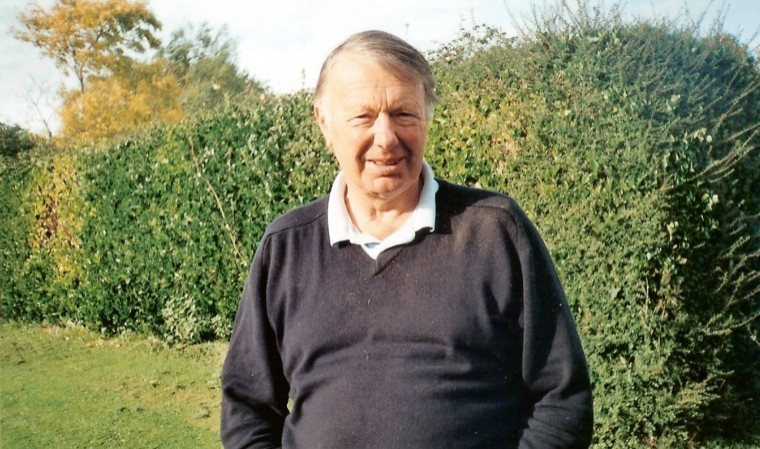These past five months of ‘captivity’ have simply flown past, which is just as well because I don’t think they have been particularly good news for anyone. It has seemed better not to mention the virus and its implications, because there has surely been too much talk in the press and on the air already. It rendered TV worthless, given there was no live sport to watch and the main channels were so full of fake news.
This household decided early on that the only thing to do was listen to the radio news when our day began at 6am, be reassured the Queen was keeping well, hope that Trump had not yet started the Third World War, then switch off and get on with our lives. The rest of TV was, as we later learned, just the usual pile of half truths and distortions, of what ‘might’ or ‘could’ be. Similar to BBC Farming Today’s Anna Hill’s favourites: “People are saying” or “Some would say” of some negative thoughts invented in their studio. It used to be a farming programme, for goodness sake…
These problems have now spread to the weather forecasts, which have mainly become a chat show about some phenomenon that ‘Kirsty from Merseyside’ has seen from her window but otherwise bears little resemblance to what actually results. Weather is more important to a farmer crying out for a good rain than to the average listener.
Anyway, until the end of June it would not even have mattered to most folk as they were mainly ‘confined to quarters’ with little to occupy themselves apart from pulling the odd weed out of a window box or lawn. Latterly, thank goodness, restrictions have been eased, but not before a huge proportion of the population had become so indoctrinated by the daily Downing Street briefings that they had become terrified to leave their houses. Luckily as farmers we are still classed, in some quarters anyway, as essential workers, so could get out.
I recently read a well-argued article pointing out that by staying home for weeks, isolated from outside contact, germs and bugs, such timidity might well be storing up the bigger risk of reduced immunity (from germs we humans are in normal contact with all our lives) when folk again venture forth into the big wide world.
As I wrote this on 31 July, the combine was cutting the winter wheat up on the Hill farm. Following cattle for some 50 unbroken years, the crop got away well last October and never really looked back. I spent a while with the driver in the cab, watching the computerised ‘feed back’ of yield, moisture content etc. Very impressive.
The first 50 acres came off at some at 11.5 tons a hectare and the last 20 let the side down a little to average 10.5 tons in total. I imagine it might have been amongst the top crops on the Downs in what has, after all, been a very difficult growing season. The land was let out to some neighbours and I think they too were quite pleased with the return on their work!
Meanwhile on the vineyard a gang of contract workers went right through the 50,000 new vines, lifting off their individual vermin guards to snip surplus growths and leave one predominant shoot to form the future ‘leader’. A labour intensive task which these chaps completed at the most amazing rate and the vermin tubes were quickly slid back into position. Meanwhile Emma is hand hoeing the weeds over the whole hillside. Walking 77+ miles to cover the plants once!
Driving quietly past the vines recently it gave me huge pleasure to see what is now a rarity to us, a brown hare, hopping around the plants; it seemed almost unconcerned at my presence. It reminded me of those other rare creatures we saw down in the Kruger Park a few years back. Lions, which we could approach very closely as they either rested, fed or made a kill, but always with the ranger’s very strict instruction: “Don’t get out of the vehicle!”
When I was young, hares were everywhere; on some vegetable land they were considered the ‘number one’ pest, such was their ability to destroy crops such as brussels sprouts and broccoli. On winter days shooting on two local farms we could see 30 or 40 hares in the ‘bag’ at the day’s end. Then the next time we shot the land there would be as many again. I quickly risked my host farmer’s wrath as I decided not to shoot them, simply hating to hear their cries if they were not killed outright; they would scream like a baby. Very distressing. Mind you, a traditionally prepared ‘jugged hare’ was always seen in our family as the finest of all wild game dishes.
Then increasingly, through the eighties and nineties, their numbers were reduced, not from shooting but from hare coursing. People with their dogs, hunting the creatures almost to extinction in some areas just to give their mates the chance to gamble on the outcome of their dogs’ prowess. No regard to the time of year or growing crops. Chasing lactating does in the breeding season, leaving the leverets to die into the bargain. So it was a real thrill to see there are still some around, and if the vines attract the hares, it makes them even better value!
Late news. The ash trees with dieback were felled along our roadside boundary late in July. A very impressive operation, some 250 plus trees cut and removed in a week. Bit of road rage due to traffic controls, I’m told!




